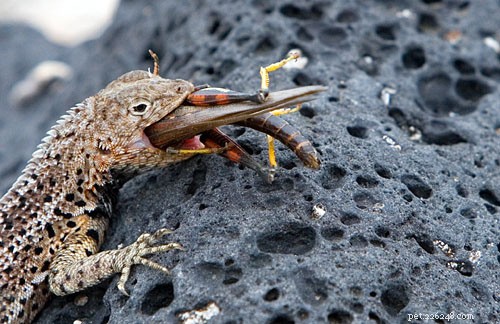 Anorexi är ett alltför vanligt och frustrerande problem som man stöter på i reptiluppfödning. Anorexi är ett symptom, inte en sjukdom. Dess behandling beror därför på att fastställa och korrigera den eller de bakomliggande orsakerna. Anorexi kan utlösas av en mängd problem och det kan vara svårt att begränsa problemet, men 9 av 10 gånger är orsaken uppfödningsrelaterad och när den väl har identifierats kan den enkelt lösas. Detta är inte att säga att om du har en reptil som går igenom en period av anorexi så gör du något helt fel! Djur är lika individuella som människor och även om du kanske håller ditt husdjur i en miljö som anses vara bäst för deras art, kan ditt individuella djur kräva lite olika behov – som fler gömställen eller andra utfodringsrutiner.
Anorexi är ett alltför vanligt och frustrerande problem som man stöter på i reptiluppfödning. Anorexi är ett symptom, inte en sjukdom. Dess behandling beror därför på att fastställa och korrigera den eller de bakomliggande orsakerna. Anorexi kan utlösas av en mängd problem och det kan vara svårt att begränsa problemet, men 9 av 10 gånger är orsaken uppfödningsrelaterad och när den väl har identifierats kan den enkelt lösas. Detta är inte att säga att om du har en reptil som går igenom en period av anorexi så gör du något helt fel! Djur är lika individuella som människor och även om du kanske håller ditt husdjur i en miljö som anses vara bäst för deras art, kan ditt individuella djur kräva lite olika behov – som fler gömställen eller andra utfodringsrutiner.
Anorexi kan preliminärt delas upp i två separata klassificeringar:
Anorexi som uppstår hos ett djur som aldrig framgångsrikt har matat sig
Anorexi hos ett djur som tidigare har ätit bra
Anorexi hos ett djur som tidigare ätit kan vara oerhört frustrerande. Det är förmodligen vanligast vid nyförvärv, men kan även förekomma hos djur som ser ut att ha legat fast under en längre tid.
Det kan vara alltför frestande att falla in i det (felaktiga) antagandet att ett tidigare matande djur plötsligt blir anorektiskt betyder att det måste ha skett en förändring i omständigheterna för att åstadkomma detta. Det är sant att detta oftare än inte är fallet, men reptiler är till sin natur extremt motståndskraftiga och kan tolerera vissa påfrestningar under långa perioder innan de når en "brytpunkt". Detta kan ses hos sköldpaddor. Idag pekar alla bevis på att sköldpaddor som hålls i Storbritannien behöver ett primärt hem inomhus i en uppvärmd vivarium. Men i många år hölls (och hålls) sköldpaddor i trädgårdar i Storbritannien. De kommer att överleva i många år under dessa förhållanden – vissa kan till och med nå tredubbla siffror men majoriteten gör det inte; och de som gör det tenderar att överleva snarare än att frodas.
Nyckelfrågor: 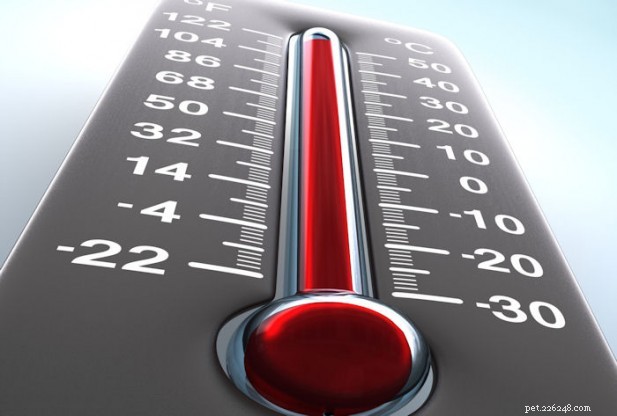
Vanligtvis förekommer denna typ av anorexi hos vildfångade djur men kan också förekomma hos nya kläckningar/nyfödda som har fötts upp av dig själv. I båda fallen är det ganska viktigt att komma till rätta med problemet så snart som möjligt, eftersom dessa djur vanligtvis är mer sårbara och kanske inte klarar av långa perioder av anorexi såväl som ett tidigare matat och i övrigt friskt djur.
Nyckelfrågor:
Hos ett djur som annars är helt friskt och har ätit före denna episod av anorexi, bör du inte bry dig omedelbart. Det finns flera orsaker till anorexi som inte utgör någon direkt risk för ditt djur, till exempel säsongsbetonad (avels)anorexi eller helt enkelt inte behov av mat. Reptiler är extremt effektiva djur och kan gå förvånansvärt långa perioder utan mat - förutsatt att de annars är helt friska och kan återuppta att äta av sig själv. Tiden att bli orolig för ett djurs anorexi är om de börjar förlora kroppskonditionen eller blir slöa eller utvecklar andra sjukdomssymtom.
Om ditt djur utvecklar anorexi är det verkligen värt att se till att ditt djurs miljö är korrekt och kontrollera de potentiella orsakerna nedan och åtgärda eventuella problem du kan hitta.
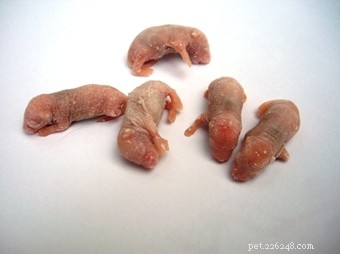 Det är värt att följa några vettiga metoder för att hålla stressnivåerna hos ett anorektiskt djur till ett minimum. Medan djuret inte matar, sluta hantera allt tillsammans – även om djuret är väl hanterat och verkar tolerera det mycket bra. Försök att hålla alla onödiga rörelser i och runt tanken till ett minimum och försök att motstå lusten att kontrollera ditt djur för regelbundet – särskilt om det är nytt eller vildfångat.
Det är värt att följa några vettiga metoder för att hålla stressnivåerna hos ett anorektiskt djur till ett minimum. Medan djuret inte matar, sluta hantera allt tillsammans – även om djuret är väl hanterat och verkar tolerera det mycket bra. Försök att hålla alla onödiga rörelser i och runt tanken till ett minimum och försök att motstå lusten att kontrollera ditt djur för regelbundet – särskilt om det är nytt eller vildfångat.
När du försöker utfodra är det ofta värt att minska storleken på maten som erbjuds något, särskilt om ditt djur har gått en lång period utan att äta, eller har fått uppstötningar.
Om ditt djur utvecklar anorexi och visar andra tecken på sjukdom (skakningar, överskott av saliv, packning etc.), eller börjar snabbt gå ner i vikt, kanske det inte räcker med att korrigera miljön och veterinär bör uppsökas.
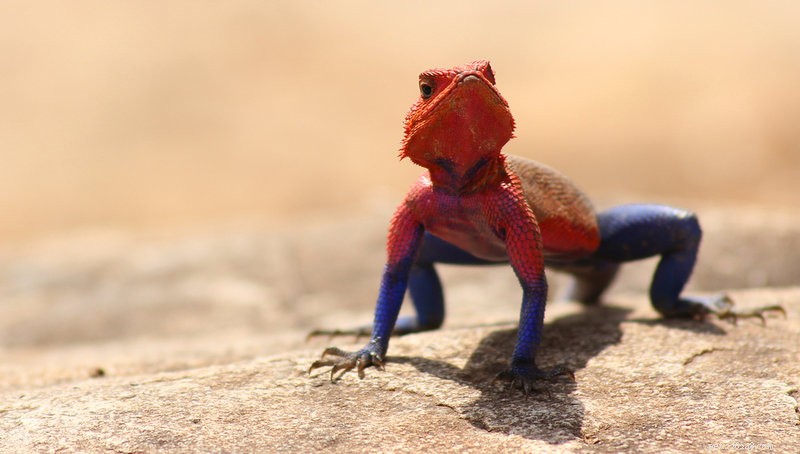 Vår erfarenhet är att problem med temperatur är den absolut vanligaste orsaken till anorexi. Felaktiga temperaturer – vare sig de är för höga eller för låga – kan göra att reptilernas aptit minskar av olika anledningar.
Vår erfarenhet är att problem med temperatur är den absolut vanligaste orsaken till anorexi. Felaktiga temperaturer – vare sig de är för höga eller för låga – kan göra att reptilernas aptit minskar av olika anledningar.
En inhägnad som är för varm och inte har några områden där djuret kan fly från värmen och svalna kommer ofta att resultera i anorexi såväl som en mängd andra problem. Ett djur som utsätts för överhettning kommer ofta att vara otroligt stressat, ibland aggressivt, och utfodring kommer att bli lägre prioritet än att fly från värmen.
När höljet är för svalt, dämpas reptilaptiten. Eftersom de är kallblodiga, tar reptiler värme från omgivningen för att värma sina kroppar och måste nå specifika kroppstemperaturer för att fungera korrekt. Enzymer och matsmältningsbakterier i reptilernas matsmältningskanaler kommer inte att fungera effektivt när djurets kropp inte har en optimal temperatur. Därför, även om mat konsumeras, kommer den inte att smältas effektivt. Detta kan orsaka olika problem som packning, mag-tarmsjukdomar och djuret kommer inte att ta upp näring lika effektivt från sin mat. Ofta kommer reptiler som utsätts för lägre än optimala temperaturer att minska sin aptit så att de inte "överbelasta" sina matsmältningssystem, eller kan sluta äta tillsammans.
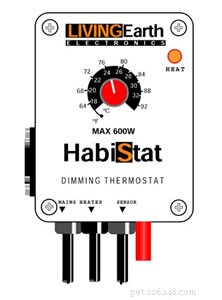 Reptiler måste kunna "värmereglera" (upprätthålla en stabil kroppstemperatur), och för att göra detta är det viktigt att deras hölje ger en termisk gradient, dvs en varm och sval ände. Att uppnå detta är enkelt; alla värmekällor bör placeras i ena änden av tanken och lämna den andra änden fri från värmekällor för att ge en sval ände. Olika arter har olika temperaturkrav, så se till att du vet vad ditt djurs optimala temperatur är. Vi mäter omgivningstemperaturen i mitten av inneslutningen för att bestämma de mest effektiva temperaturerna för olika arter. Temperaturerna i de varma och kalla ändarna är vanligtvis oväsentliga så länge som omgivningstemperaturen är korrekt. (Detta kanske inte är fallet med vissa arter som kräver mycket höga soltemperaturer som Uromastyx arter och Dwarf Spiny Tailed monitorer etc.).
Reptiler måste kunna "värmereglera" (upprätthålla en stabil kroppstemperatur), och för att göra detta är det viktigt att deras hölje ger en termisk gradient, dvs en varm och sval ände. Att uppnå detta är enkelt; alla värmekällor bör placeras i ena änden av tanken och lämna den andra änden fri från värmekällor för att ge en sval ände. Olika arter har olika temperaturkrav, så se till att du vet vad ditt djurs optimala temperatur är. Vi mäter omgivningstemperaturen i mitten av inneslutningen för att bestämma de mest effektiva temperaturerna för olika arter. Temperaturerna i de varma och kalla ändarna är vanligtvis oväsentliga så länge som omgivningstemperaturen är korrekt. (Detta kanske inte är fallet med vissa arter som kräver mycket höga soltemperaturer som Uromastyx arter och Dwarf Spiny Tailed monitorer etc.).
Det mest pålitliga sättet att uppnå den optimala temperaturen för ditt djur är genom att använda en termostat. En termostat kopplar helt enkelt mellan din värmekälla och elnätet och reglerar strömmen som skickas till värmekällan baserat på temperaturen i tanken – mätt med temperatursonden. Olika typer av termostater finns tillgängliga och några av de mer avancerade termostaterna kan ställa in dag/natt temperaturinställningar och styra UVB-belysning på en dag/natt på/av-cykel.
Föreslagna omgivningstemperaturer för vanliga arter:
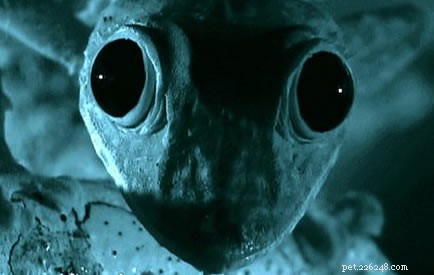 Nattliga temperatursänkningar är ett vanligt förslag som finns online på bland annat webbplatser och forum. Vi har funnit att endast ett fåtal utvalda arter tycks dra nytta av sjunkande nattetid och i de flesta fall orsakar temperatursänkningar på natten i allmänhet fler problem (inklusive anorexi) än fördelar. Men om du är inställd på att ge ditt djur en nattsänkning måste andra aspekter av djurhållningen också anpassas för att ta hänsyn till dessa temperaturfall – en av dem är utfodringen. Ring oss för råd om hur du bäst anpassar ditt djurs uppfödning för att ta hänsyn till ett nattfall eller för att ta reda på om din art gynnas.
Nattliga temperatursänkningar är ett vanligt förslag som finns online på bland annat webbplatser och forum. Vi har funnit att endast ett fåtal utvalda arter tycks dra nytta av sjunkande nattetid och i de flesta fall orsakar temperatursänkningar på natten i allmänhet fler problem (inklusive anorexi) än fördelar. Men om du är inställd på att ge ditt djur en nattsänkning måste andra aspekter av djurhållningen också anpassas för att ta hänsyn till dessa temperaturfall – en av dem är utfodringen. Ring oss för råd om hur du bäst anpassar ditt djurs uppfödning för att ta hänsyn till ett nattfall eller för att ta reda på om din art gynnas.
Förmodligen är den näst vanligaste orsaken till anorexi på grund av ångest, orsakad av djurets osäkerhet i sin miljö. Om ett djur inte känner sig tryggt i sin miljö är det helt enkelt inte intresserad av att äta. Nyligen vildfångade djur är mest mottagliga för detta problem, vilket är anledningen till att vi inte säljer några vildfångade djur som inte redan är vältränade, friska, matande och väl tilltagna. Vissa arter tenderar att lida mer, med ett tillstånd som kallas "missanpassningssyndrom" där individer helt enkelt inte anpassar sig väl till fångenskap. Just därför är vi försiktiga med de arter som vi importerar och importerar endast de som enligt vår erfarenhet anpassar sig väl.
Långtidsdjur i fångenskap såväl som djur som fötts upp i fångenskap kan också känna sig otrygga i sin miljö och riskerar därför att bli anorektiska. Detta inträffar mest sannolikt efter en flytt till en ny miljö, till exempel när du tar hem ett nytt djur, men kan också inträffa om en inhägnads position i huset ändras. 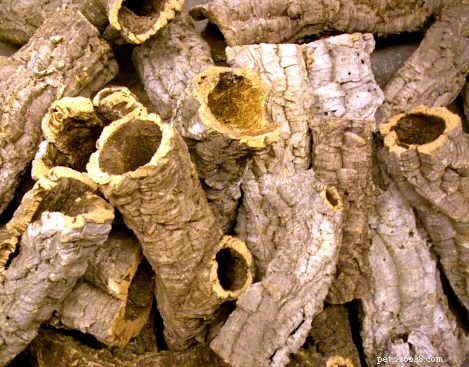
För att hjälpa ett djur att känna sig trygga och trygga i sin miljö är det viktigt att förse den med många gömställen. När det kommer till gömställen, Mindre är … helt enkelt Mindre . Det kan tyckas som baklängeslogik, men om du placerar ett överskott av gömställen i ditt djurs miljö kommer du sannolikt att se mer av ditt djur ute och bete sig naturligt. Om du bara placerar ett enda gömställe för ditt djur kan du slå vad om att de kommer att tillbringa större delen av sitt liv under det, för rädda för att ge sig ut.
Lika viktigt som antalet gömställen är också formen och storleken på dem. Att placera ett gömställe som är alldeles för stort för ditt djur kommer att ge liten eller ingen nytta för det. Särskilt kungliga pytonslangar älskar gömställen som de bara kan klämma sig in i. När det gäller dem, om de bara kan passa in i utrymmet, kan inget rovdjur nå dem och de känner sig säkrare.
Om du har ett djur som har slutat mata är det alltid värt att placera några extra gömställen i dess inhägnad eller lägga till lövverk och dekor för att bryta upp stora öppna ytor.
Anorexi kan orsakas genom att erbjuda en mattyp som ditt djur inte är sugen på att äta. Hos ormar kan detta vara storleksrelaterat. Ormar vägrar ibland att äta en mus/råtta som är för liten för dem och kommer ofta att vägra mat som är för stor. Ibland kan en orm börja vägra att äta en viss mattyp, vare sig det är mus eller råtta. Att tillfälligt byta från en mus till en råtta av likvärdig storlek, eller vice versa, kan uppmuntra en orm att äta och få igång matsmältningssystemet igen, vilket betyder att den är mer angelägen om att äta i framtiden och du bör kunna byta tillbaka till ursprunglig matkälla efter några framgångsrika foder.
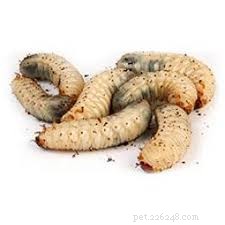 På liknande sätt som ormar kan ödlor ibland bli "uttråkade" på en matkälla om de bara matas en typ. Variation är viktigt men bör tillhandahållas genom att använda en annan matkälla på separata foder och inte genom att mata ditt djur med en mängd olika insekter samtidigt. När du använder mjölmaskar eller vaxmaskar i en maträtt kan synlighet ibland vara ett problem och det kan hjälpa att sätta in skålen i substratet för att göra det lättare för ditt djur att se och komma till insekterna.
På liknande sätt som ormar kan ödlor ibland bli "uttråkade" på en matkälla om de bara matas en typ. Variation är viktigt men bör tillhandahållas genom att använda en annan matkälla på separata foder och inte genom att mata ditt djur med en mängd olika insekter samtidigt. När du använder mjölmaskar eller vaxmaskar i en maträtt kan synlighet ibland vara ett problem och det kan hjälpa att sätta in skålen i substratet för att göra det lättare för ditt djur att se och komma till insekterna.
Some reptiles are nocturnal, such as crested geckos and leopard geckos and feeding them during the daytime may be less successful than feeding them at night when they are more likely to be out and about and looking for food.
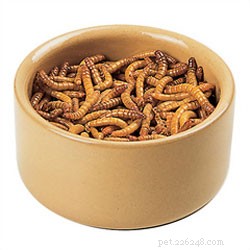 Leopard geckos can suffer from a unique problem that can arise if mealworms are not provided for them to eat. Many Leopard geckos are captive bred in large numbers on the continent and they are primarily fed on mealworms. If mealworms are suddenly removed from their diet, they can go through what appears to be a kind of mealworm withdrawal. They may rapidly lose weight and refuse to eat. For this reason we always recommend providing leopard geckos with a bowl of mealworms 3-4 days a week.
Leopard geckos can suffer from a unique problem that can arise if mealworms are not provided for them to eat. Many Leopard geckos are captive bred in large numbers on the continent and they are primarily fed on mealworms. If mealworms are suddenly removed from their diet, they can go through what appears to be a kind of mealworm withdrawal. They may rapidly lose weight and refuse to eat. For this reason we always recommend providing leopard geckos with a bowl of mealworms 3-4 days a week.
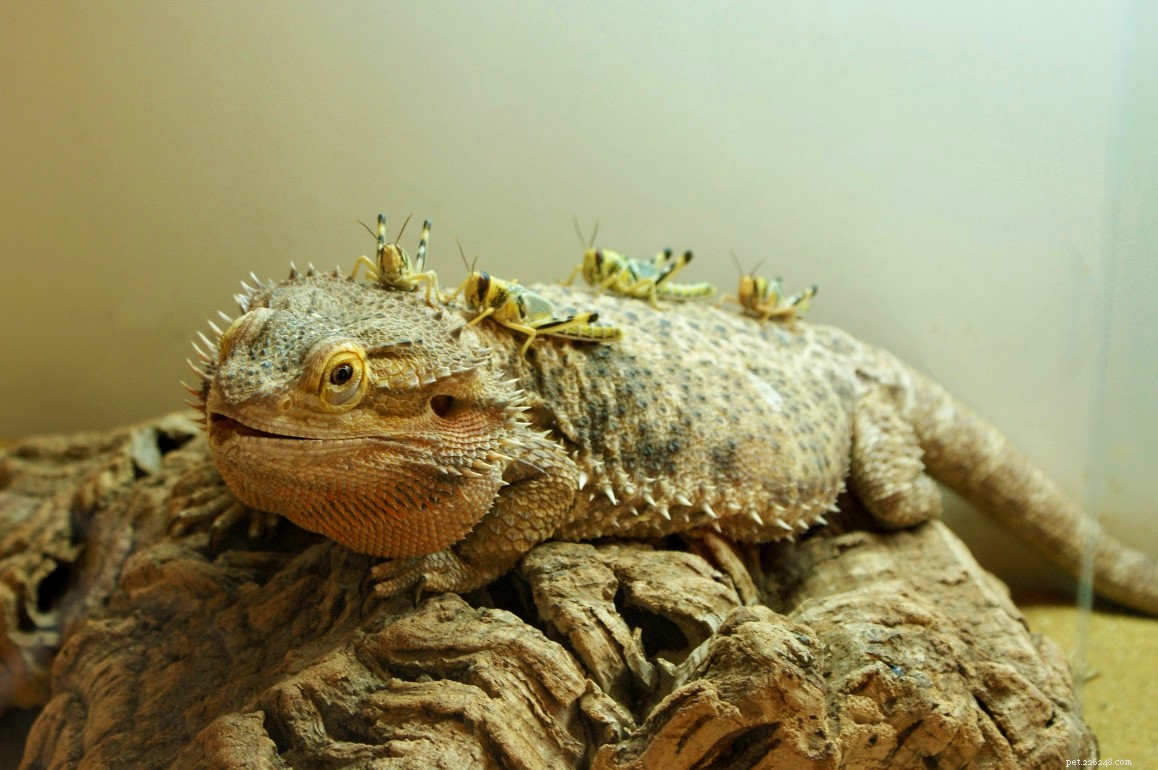 This is separate from the issue of obesity but may be linked. This cause of anorexia is a little unusual and is only relevant to an animal that has previously been eating well. When provided with an over-abundance of food many reptiles (particularly lizards and amphibians) will stop feeding. The specific reasons behind this are unknown but are believed to be due to one of two things:The animal realises that there is an over-abundance of food and therefore feels under no pressure to make any particular effort to eat, as there is no urgency to find food; This lack of urgency if prolonged may eventually start to suppress appetite as the digestive system slows down. OR, the constant movement of food in the enclosure desensitises the animal, which no longer sees the food as prey but instead sees it as simply part of the environment.
This is separate from the issue of obesity but may be linked. This cause of anorexia is a little unusual and is only relevant to an animal that has previously been eating well. When provided with an over-abundance of food many reptiles (particularly lizards and amphibians) will stop feeding. The specific reasons behind this are unknown but are believed to be due to one of two things:The animal realises that there is an over-abundance of food and therefore feels under no pressure to make any particular effort to eat, as there is no urgency to find food; This lack of urgency if prolonged may eventually start to suppress appetite as the digestive system slows down. OR, the constant movement of food in the enclosure desensitises the animal, which no longer sees the food as prey but instead sees it as simply part of the environment.
If this is the cause of your animal’s anorexia then it is typically easy to resolve. Simply remove any food from your animal’s environment and leave them without any food for 2-3 days (assuming they are otherwise healthy). After this “fasting” period reintroduce a small amount of food and see if they eat. If not, go through another 3 days of fasting and try again. Chances are that by this point, your animal will be hungry and will jump at the chance to eat any food provided for it. If even after this period of fasting your animal still refuses food, it may be worth considering that there may be another reason for its anorexia.
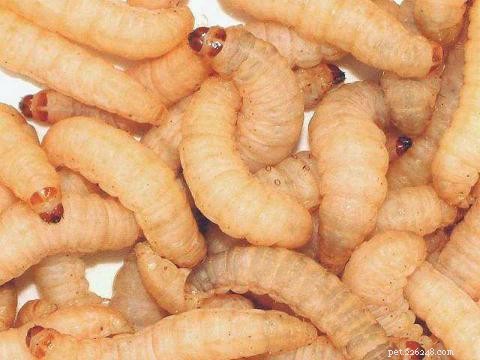 As mentioned in the Feeding Routine section above, it may be helpful to initially try an alternate food source after the fasting period. For example, if your animal has been primarily fed on locust or crickets, try an insect that doesn’t hop around, such as cockroaches, mealworms, wax worms or fruit beetle larvae. With non-jumping insects, like those mentioned above, it is best to provide them for your animal in a bowl, shallow enough for your animal to easily see into, but not so shallow that the food can escape.
As mentioned in the Feeding Routine section above, it may be helpful to initially try an alternate food source after the fasting period. For example, if your animal has been primarily fed on locust or crickets, try an insect that doesn’t hop around, such as cockroaches, mealworms, wax worms or fruit beetle larvae. With non-jumping insects, like those mentioned above, it is best to provide them for your animal in a bowl, shallow enough for your animal to easily see into, but not so shallow that the food can escape.
This issue is only relevant if you have more than one animal in the same enclosure. Housing certain reptiles together can often be achieved relatively risk free if you follow good practices. See our other blog post on housing reptiles together for more info.
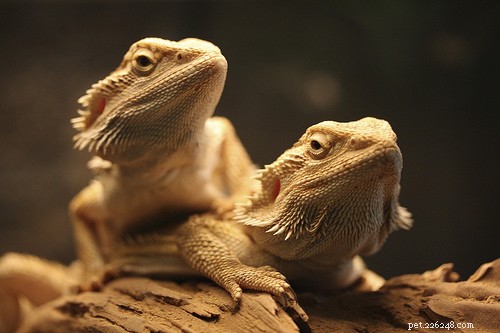 When two animals are housed together, while they may appear to “get along” they will see each other as competition for space and for food. In some circumstances this can result in physical and psychological bullying. Whilst the former is usually pretty obvious, psychological bullying may not be and it can be a cause of anorexia. There will always be one animal more dominant than the other, and the dominant animal may only allow the subordinate animal to feed once it has eaten its fill, or may even pressure the subordinate animal into refusing to eat all together.
When two animals are housed together, while they may appear to “get along” they will see each other as competition for space and for food. In some circumstances this can result in physical and psychological bullying. Whilst the former is usually pretty obvious, psychological bullying may not be and it can be a cause of anorexia. There will always be one animal more dominant than the other, and the dominant animal may only allow the subordinate animal to feed once it has eaten its fill, or may even pressure the subordinate animal into refusing to eat all together.
The simplest and most effective way of solving this problem is to separate the animals. Other ways of tackling this problem should only be seen as temporary as they will simply gloss over the problem and mask it – the stress of being housed with an overly dominant animal will still be present and the issue of anorexia may return. That being said separating the animals during feeding is a potential way of managing this issue. It is usually best to remove the dominant animal leaving the non-feeding individual in the enclosure, though if this doesn’t work after several attempts it is worth attempting it the opposite way round.
This is most common in male individuals – especially male Royal Pythons. During the breeding season many animals will reduce their appetites and may even stop feeding all together. Male royal pythons have been known to go several months or more without eating during this time. Even though you may not set seasonal temperature and lighting changes in your animal’s enclosure, they may still pick up on these changes from the external environment. Flat-tailed horned lizards (Phrynosoma mcallii ) have been shown to undergo brumation in the autumn regardless of the temperature that they are kept in captivity.
So long as your animal is otherwise fit and healthy and is not losing weight, inappetance during breeding season should not give you cause for concern. However you should make sure there are no other potential causes for the anorexia and keep a close eye on your animal’s physical condition.
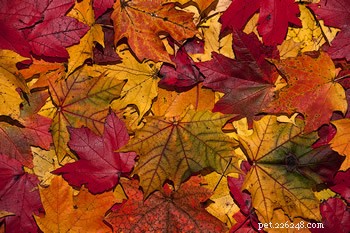 Towards the tail-end of summer and the beginning of autumn, animals may pick up on the shorter days and cooler air temperature outside their tanks. This may cause them to prepare for winter and brumation, during which time their appetites would normally decrease. If your tank is thermostatically controlled and the ambient air temperature inside the tank remains stable, your animal should eventually snap out of it and realise they do not need to go through brumation and feeding should resume. If your tank temperatures are not controlled by a thermostat then you need to find a way of maintaining a suitable stable air temperature such as by changing the wattage of bulb used to heat your enclosure. For lizards, temporarily increasing the amount of time the UVB light is on for by an extra hour may also help them to snap out of preparing for brumation.
Towards the tail-end of summer and the beginning of autumn, animals may pick up on the shorter days and cooler air temperature outside their tanks. This may cause them to prepare for winter and brumation, during which time their appetites would normally decrease. If your tank is thermostatically controlled and the ambient air temperature inside the tank remains stable, your animal should eventually snap out of it and realise they do not need to go through brumation and feeding should resume. If your tank temperatures are not controlled by a thermostat then you need to find a way of maintaining a suitable stable air temperature such as by changing the wattage of bulb used to heat your enclosure. For lizards, temporarily increasing the amount of time the UVB light is on for by an extra hour may also help them to snap out of preparing for brumation.
One of the first things to change when an animal stops eating is handing. Handling can be a stressful experience for an animal, especially in a new acquisition which may not have settled in properly yet. This is why we always recommend leaving your animal at least 4 weeks before you begin handling, to allow it to settle in and so you can make sure it is feeding well and behaving naturally. If your animal stops eating, simply stop all unnecessary handling and wait until it is back to eating consistently.
Physiological causes are likely to require veterinary advice and treatment to properly resolve them. So if you suspect any of the following to be the cause of anorexia we strongly recommend that you seek out a good veterinarian with reptile experience.
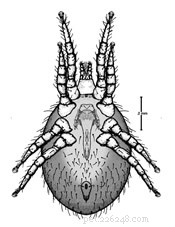 Mites are a reptile keeper’s nightmare. They are extremely resilient, reproduce rapidly and can cause all sorts of problems if they are not dealt with swiftly and effectively. Whilst most common in snakes, mites can affect lizards, particularly lizards with rough scales. Mites are extremely irritating for the affected animal and can often suppress the animal’s desire to eat. The most effective way of eliminating mites is to see a veterinarian and get an injectable treatment – though some species react badly and can’t have this. Additionally, the enclosure should have all of the substrate and décor removed, the substrate should be discarded and replaced with newspaper and décor should be thoroughly cleaned, preferably with boiling water. The enclosure should then be thoroughly cleaned with hot water and a retile safe disinfectant. After a few weeks, once it appears all the mites have been eliminated, substrate and décor can be replaced.
Mites are a reptile keeper’s nightmare. They are extremely resilient, reproduce rapidly and can cause all sorts of problems if they are not dealt with swiftly and effectively. Whilst most common in snakes, mites can affect lizards, particularly lizards with rough scales. Mites are extremely irritating for the affected animal and can often suppress the animal’s desire to eat. The most effective way of eliminating mites is to see a veterinarian and get an injectable treatment – though some species react badly and can’t have this. Additionally, the enclosure should have all of the substrate and décor removed, the substrate should be discarded and replaced with newspaper and décor should be thoroughly cleaned, preferably with boiling water. The enclosure should then be thoroughly cleaned with hot water and a retile safe disinfectant. After a few weeks, once it appears all the mites have been eliminated, substrate and décor can be replaced.
Other parasites can be found in captive bred animals, but are most common in wild caught animals. Other parasites - especially intestinal parasites such as worms, can really have an impact on an animal’s desire to eat. Intestinal parasites can be hard to detect, but you may see evidence in the faeces with the presence of eggs. Occasionally the stomach will bloat due to parasites, but the only way to really check for parasites is to send a faecal sample off for analysis - most vets should be able to offer this.
Compaction is a condition where an animal’s gut becomes blocked, either by urates, ingested substrate, faeces or another blockage – resulting in an inability or a limited ability to pass waste. When an animal becomes compacted, their first instinct can be to stop feeding so as not to make the issue worse. Compaction can – but not always be spotted by noticing a bulge at your animal’s rear and/or by repeated and sustained failed attempts at passing waste. Sometimes compaction can be resolved in the early stages by giving your animal a bath in some lukewarm water for around half an hour. If this doesn’t resolve the issue, veterinary treatment should be sought.
MBD is the name given to a group of conditions whereby the bone structure of the animal is weakened. For more info specifically regarding MBD, read our MBD article here. MBD can cause the jaw bones to weaken, resulting in a soft jaw which can make feeding difficult and sometimes painful. If you suspect MBD to be the cause of your animal’s anorexia, it is important that you seek veterinary help as soon as possible.
If your animal is feeling under the weather due to other illnesses such as respiratory infection, stomatitis or gastroenteritis - this too could cause anorexia. Look for signs and symptoms of these and other possible illnesses to check that a separate illness isn’t causing anorexia.
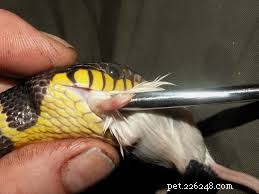 As a general rule, we never attempt to assist feed or force feed any animal, and we recommend that you do not attempt it either. 90% of the time, an anorexic animal can be persuaded to feed without the need for assist/ force feeding and oftentimes, attempting this can cause more harm than good – especially if you do not have extensive experience in performing it. Assist/ force feeding is a very stressful process for the animal and the stress can be just as detrimental to the animal as the anorexia itself. This stress can have a negative impact on the effectiveness of the animal’s digestive processes and will reduce the benefit of any meal received and increases the likelihood of regurgitation. It may also result in the animal never fully regaining its feeding response.
As a general rule, we never attempt to assist feed or force feed any animal, and we recommend that you do not attempt it either. 90% of the time, an anorexic animal can be persuaded to feed without the need for assist/ force feeding and oftentimes, attempting this can cause more harm than good – especially if you do not have extensive experience in performing it. Assist/ force feeding is a very stressful process for the animal and the stress can be just as detrimental to the animal as the anorexia itself. This stress can have a negative impact on the effectiveness of the animal’s digestive processes and will reduce the benefit of any meal received and increases the likelihood of regurgitation. It may also result in the animal never fully regaining its feeding response.
There may be unusual and rare situations where force feeding is the only/ best option. If you think your animal may be in this position, please give us a call or speak to a reputable reptile vet or pet shop for advice.
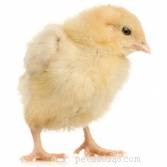 In some circumstances, as mentioned in a previous section, changing the food source can help an animal regain its feeding response. With particular regard to snakes, switching from rodents to chick or hamster can work well. We’ve found Burmese pythons are particularly keen to feed on chick. However, both chick and hamster can be somewhat addictive and should be avoided if possible.
In some circumstances, as mentioned in a previous section, changing the food source can help an animal regain its feeding response. With particular regard to snakes, switching from rodents to chick or hamster can work well. We’ve found Burmese pythons are particularly keen to feed on chick. However, both chick and hamster can be somewhat addictive and should be avoided if possible.
Nutritionally chicks are a poor food source long term for snakes and hamsters can be hard to get a hold of and are also much more expensive than the equivalent rat. A better option can be to use a chick to scent a mouse or rat to tempt a snake into eating. Combining this scenting technique, with periods of fasting before attempting unscented food can work very well in encouraging a non-feeding snake into eating its normal food source again.
The benefits of the use of Powerade are mostly anecdotal but its use is often recommended on forums and other places online. Powerade is used to help treat anorexia by preparing a 50:50 solution with lukewarm water and bathing your animal in the solution for around 30mins. With a bit of luck your animal will have a drink of the diluted Powerade, which is full of electrolytes and sugars which can help to boost an animal’s digestive system and increase its appetite.
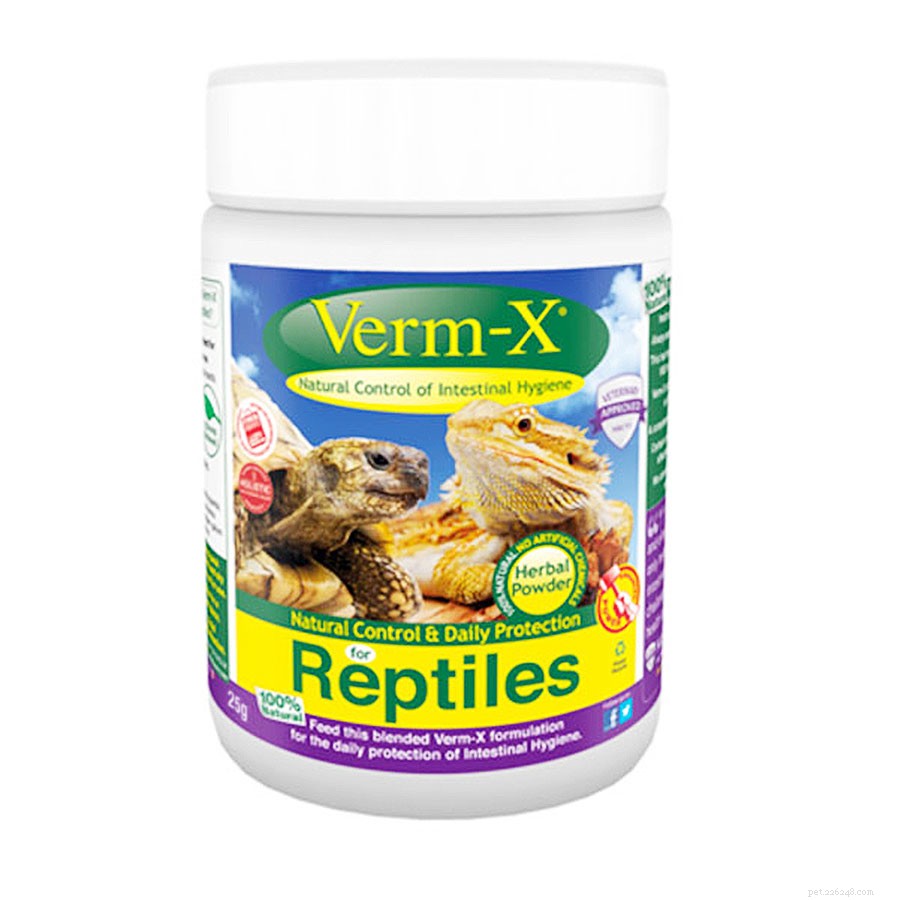 If you have an animal that has recently regurgitated - whether or not it is otherwise feeding well, it is worth thinking about purchasing one of the several supplements available that help boost the good gut flora which help your animal digest food (such as Verm-X). After an animal regurgitates, a large amount of their gut flora are also removed which makes digesting food harder. The gut flora will gradually recover on their own, but these supplements can help promote their recovery. The supplements are usually in powder form and can be dusted onto rodents or insects. Just remember to reduce the size of the meal you provide for a period, until your animal has gone several weeks without regurgitation.
If you have an animal that has recently regurgitated - whether or not it is otherwise feeding well, it is worth thinking about purchasing one of the several supplements available that help boost the good gut flora which help your animal digest food (such as Verm-X). After an animal regurgitates, a large amount of their gut flora are also removed which makes digesting food harder. The gut flora will gradually recover on their own, but these supplements can help promote their recovery. The supplements are usually in powder form and can be dusted onto rodents or insects. Just remember to reduce the size of the meal you provide for a period, until your animal has gone several weeks without regurgitation.
This is by no means a comprehensive article on Anorexia and if you are unsure about any of the above and your animal isn’t feeding properly feel free to give us a call or pop in and see us at the Southbourne store and we’d be happy to talk through things with you and help you get your animal feeding well again.